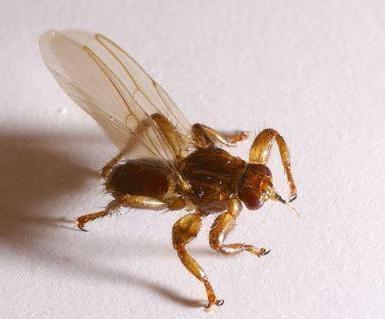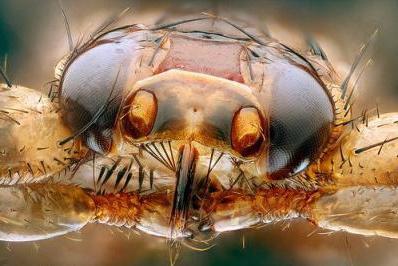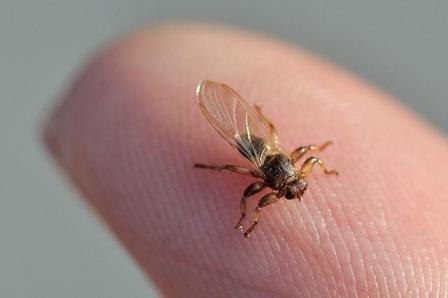At the end of summer, an annoying moose fly appears in the forests of Siberia and central Russia (a photo of the insect is presented in this article). In addition to the territory of our country, it still lives in the north of China, in North America and Scandinavia. The number of parasites directly depends on the number of deer and elk.

Moose fly, moose tick, moose louse, deer bloodsucker - all this is the same insect belonging to the Hippoboscidae family. The three-millimeter body has a flattened shape and is covered with light brown leathery dense integuments. Antennas are located on the head in deep depressions, which practically do not protrude above the surface. The elk fly has large eyes, consisting of more than 2.5 thousand facets. Her eyes occupy ¼ of the whole body, except for them there are 3 more simple eyes on the head of the fly. The oral apparatus of this insect is a piercing-sucking type and has a similar structure to the proboscis of a fly, which is called the autumn lighter. The deer bloodsucker has dense and transparent wings with a small number of veins, their length is from 5.5 to 6 mm. Strong legs with thickened hips and asymmetric claws are located on the sides of the chest. The elk fly is equipped with an elastic abdomen, which, when ingested, can greatly increase in size.

This type of insect belongs to round-life ectoparasites. In other words, the moose fly eats only the blood that it draws from warm-blooded animals. Its main owners, breadwinners are artiodactyls. These are roe deer, deer, deer and moose. In addition , the bloodsucker fly successfully uses livestock, wild boars, bears, foxes, dogs, badgers, sheep and so on. If a high number of this parasite is observed, then a bite of a moose fly threatens a person, and he, it should be noted, is rather painful. At the site of the bite, the skin turns red, a dense nodule appears, which can last up to 20 days.
Why is it called a moose louse or a tick? Despite the presence of well-developed wings, these insects fly quite poorly and over short distances. In fact, they need wings to fly to the smell of a warm-blooded animal. And as soon as they reach their goal, they are immediately discarded. All their further life already proceeds on the body of the owner-breadwinner. They bury themselves in his coat, bite through his skin and begin to feed on blood. Hence, a comparison with the usual louse and tick appeared.

After a couple of weeks of a serene life, the bloodsucker begins puberty, they begin to stay in pairs: the female and the male. After fertilization, after 16 days, the female gives birth to the first larva. Note that it gives birth, since this type of insect belongs to live-bearing, or rather, puppet-bearing. In the female, the egg first develops in the body, then the larva. Three-millimeter formed pre-pupae already appear in the light. After a few hours, they turn into a false-cocoon (puparium), become covered with a hard shell and fall to the ground. This usually happens from October to March. In this state, the pupae will remain until August, and then new winged moose flies appear. The female in her life (about six months) manages to postpone up to 30 of such puparia.
These parasites bring great anxiety to animals, since they can settle in hundreds on one individual. And this leads to depletion of the animal, growth retardation may occur in young animals. Unfortunately, effective repellents against this insect have not been found. To protect yourself from his bites, you need to take care of your clothes when going to the forest. The cuffs on the sleeves should fit snugly on the body, trousers should be tucked into socks, and a headdress must be on the head. After a walk, carefully inspect your clothing and remove the pests hidden in it.